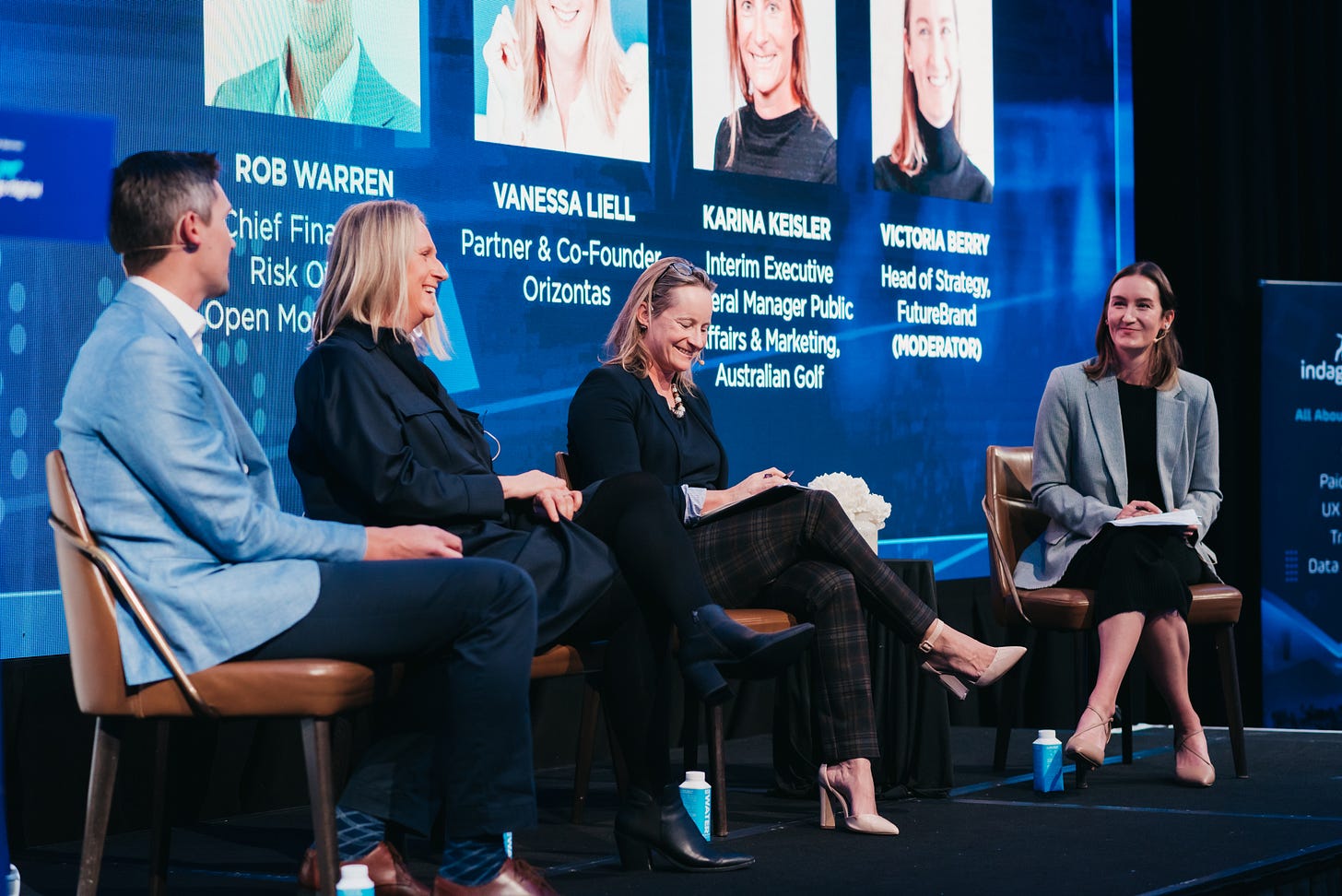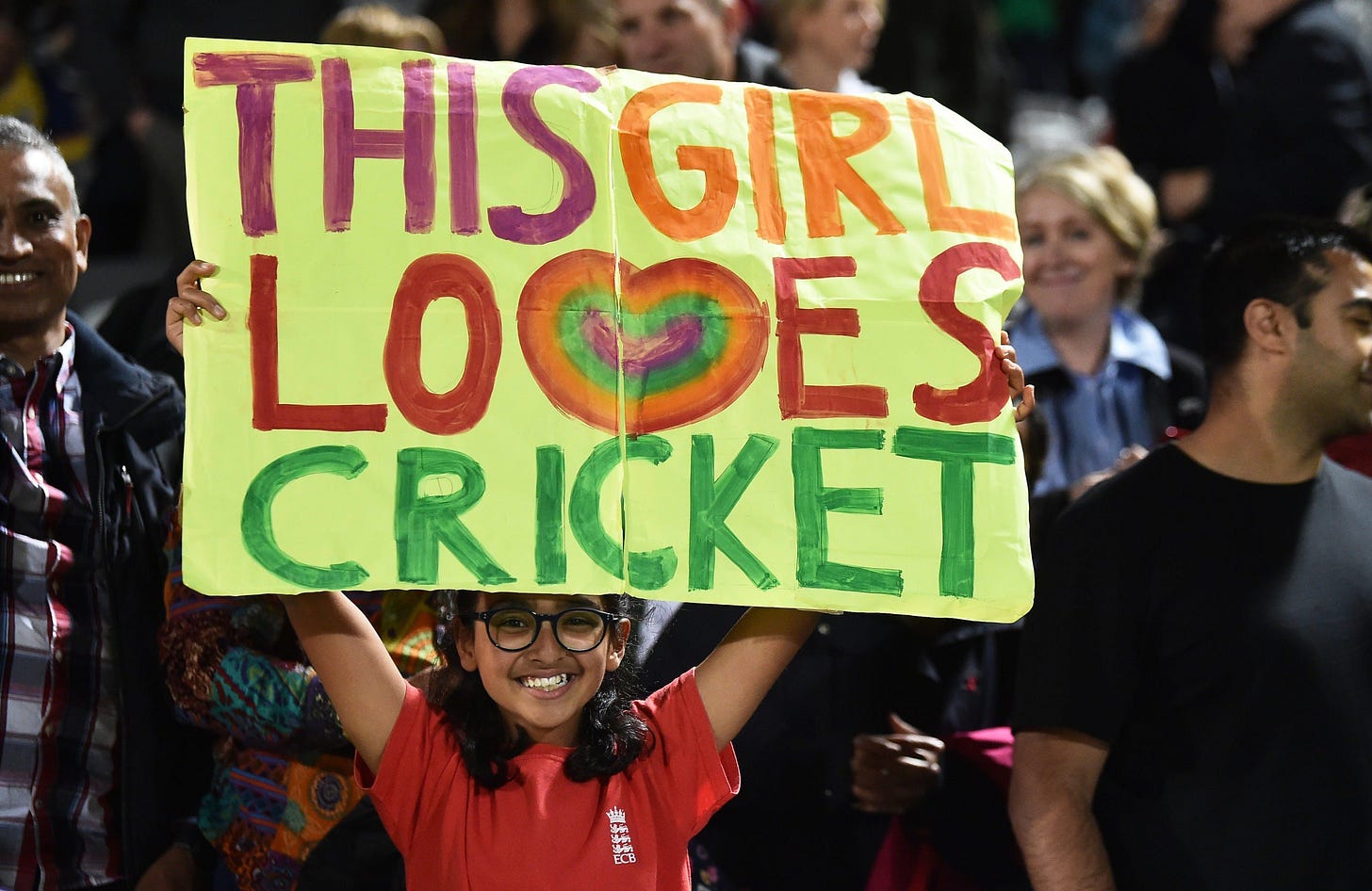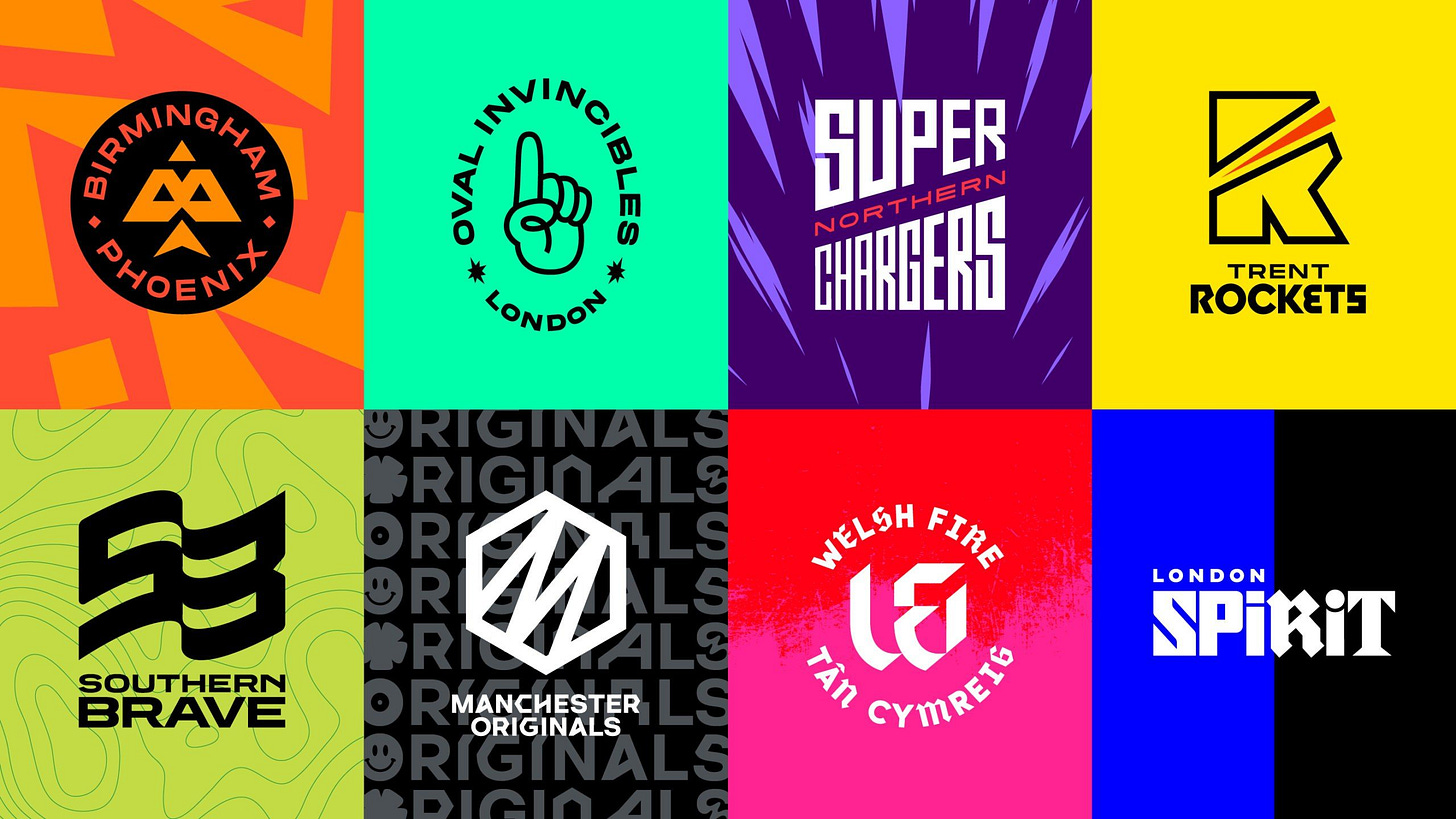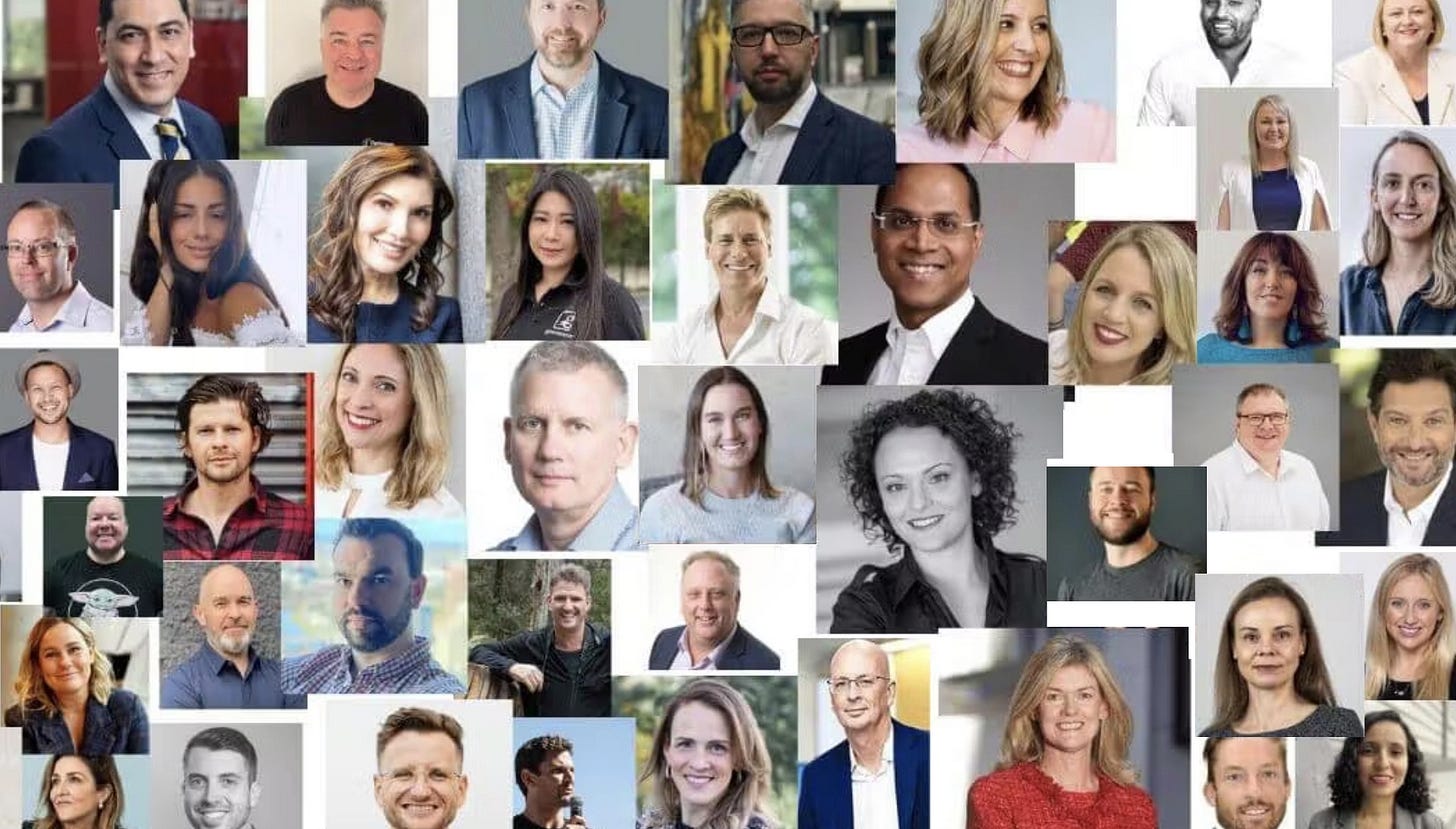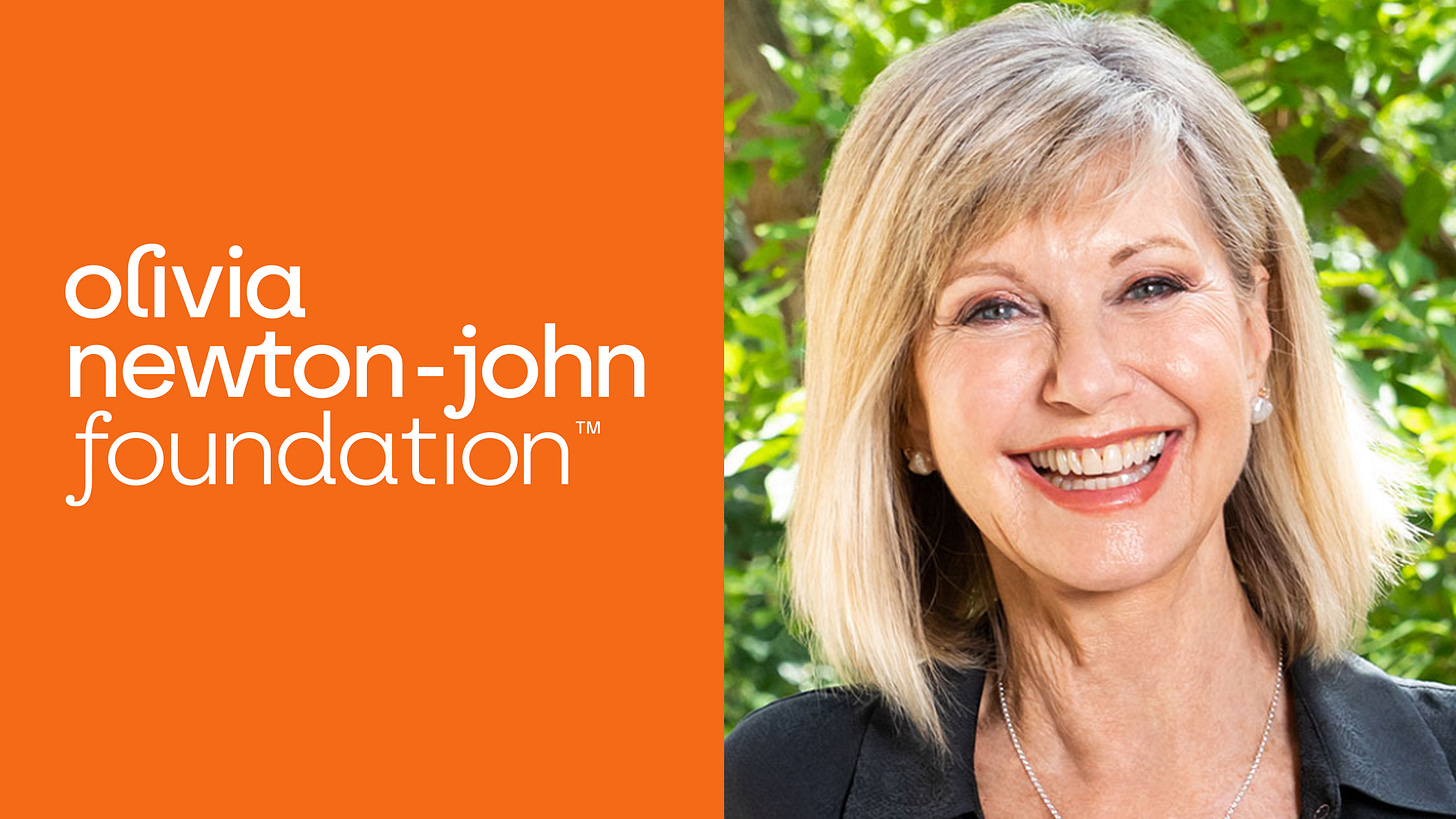FutureBrand news, views & insights: September 2022
Dollars and sense
A few weeks ago, I had the opportunity to attend the Mumbrella Finance Marketing Summit and reflect on money matters, my first in-person event since I presented at the Travel Marketing Summit, back in March 2020 when the world hung on tenterhooks.
It was great to be back – and for a change, it was great to be sat in the audience.
Thanks to our guests, Karina, Vanessa and Rob – and our very own Victoria – for a great discussion on all things ESG.
In case you missed it, I wrote about it here, having tried to make sense of my copious notes and organise them into five areas worth considering as part of any ESG endeavours.
Plus, thank you to Paula Benson from IFM Investors and Jonathan Buck from Open Money Group for helping us get prepped for the session, only to have to pull out at the last minute as a result of the dreaded COVID.
I did also manage to catch a couple of other sessions on the day and a couple of comments stood out for me.
Firstly, this insight from Kantar’s latest research: post-pandemic, amidst all the talk of flexible working, Australians are not simply re-evaluating ‘how’ we work but rather ‘why’ we work. That seems to me an important distinction to draw – it's also an equally important shift and one that could easily be overlooked.
Secondly, this statistic drawn from a meta-study on the effect of financial literacy on financial behaviours and shared by Decision Design: financial education explains 0.1% of financial behaviour. So, stop your financial literacy programs – in fact, it sounds like customers have already stopped – and start thinking about helping customers via brand-led CX nudges.
A further reflection I’d add is one of my own on in-person events after a couple of years of webinars and all variety of video sessions. What’s the difference for me? Simply put, my notes. Or more specifically, my pages and pages of notes. Far more than I’d normally take via video. Clearly there’s something about the in-person experience that sparks more thoughts and ideas in me – now that I’ve recognised the difference, it’s food for thought, quite literally.
Goal! Fore! Six!
When we’re not talking money matters, it’s often sport that’s on our mind.
Following last month’s results for Asian Football Confederation after Turnstile’s Football Landscape Report revealed the new branding has contributed to 14% market growth and 104m new fans across Asia, we’ve now added the case study to our website, you can read it here.
Just last week, Golf Australia and the PGA of Australia have together scored their own wins with the news that so many Australian golfers will be making the trip back home for the Australian Open and the Australian PGA Championship, including none other than Cam Smith, fresh from winning The Open at St. Andrews.
As I mentioned in a LinkedIn post about the news, if you want to look at a 'business transformation' happening right now in Australia – so that you can understand how these things take shape – look no further than Australian Golf. Suffice to say it’s very rewarding to know that the team here at FutureBrand is playing its own part in the growth of golf across all playing formats and skill levels – because all golf is golf.
To make it a sporting hat-trick, The Hundred has been shortlisted by the UK edition of the EFFIES in the category of Positive Change: Social Good - Brands. This vibrant, dramatic, fast-paced competition is making cricket history, including the record for the biggest audience for a women's match in England at 1.6 million supporters.
By way of background, the England & Wales Cricket Board (ECB) was struggling with its cricket portfolio to recruit the next generation of fans and players. Cricket is a sport steeped in tradition, with historic rivalries and an aura of exclusivity. For existing fans, this history was part of the appeal, but for the new audience generation, the sport was inaccessible.
The driving idea behind The Hundred was to create a form of cricket that had mass appeal built into its DNA, thereby drawing in more diverse audiences than ever before. It has challenged existing perceptions of cricket and crafted a new narrative for the sport, inviting everyone - especially children and their families, of all ethnic backgrounds - to fall in love with the game at its intense, incredible best.
Not unlike how our historical work with Cricket Australia to create the Big Bash League back in 2011 – here’s one of the original concept images from the archives.
Let’s talk authenticity
As well as moderating the panel at Mumbrella Finance Marketing Summit, Victoria contributed to Dynamic Business and the latest in their Let’s Talk series on the topic of building authentic brand experiences and winning more customers.
Here’s what Victoria had to say…
Inundated with information, choices and distractions, authenticity can be a currency to stand out. But it’s not enough to say, ‘trust me, I’m authentic’, brands must show it in all the key moments, big and small.
Here are three ways to make those moments matter.
Incredible is more than credible.
Being credible is valuable, but being incredible is memorable. Regularly revisiting and evolving how people experience your brand for the better shows you’re alive to fresh opportunities, and the only ones who can do what you do.
Genuine is better than perfect.
Facts and data are helpful, but if you want people to do something, make them feel something. Whether you’re B2B or B2C, for employees or customers, emotion is still the number one driver of choice and loyalty.
Authenticity is defined by experience.
Strong brands are created with purpose but ultimately defined every day by the experience. Consistently ‘walking the talk’ gives your brand a measurable competitive advantage so that more people will want to work for or buy from you.
From building brands to growing families
Becoming a parent is a big deal, however it happens – adoption, fostering, newborn, IVF, surrogacy.
What's more, it's a big deal for both parents. But, both don't typically have access to the same levels of parental leave – while the primary carer might get up to 12 weeks or more of parental leave, secondary carers often tend to receive as little as a fortnight.
That's why I'm very happy to say that we have evolved our approach to parental leave at FutureBrand Australia: both primary and secondary carers can now benefit from the same parental leave of up to 12 weeks.
So many parenting skills and habits are established within those first few weeks and months, now those experiences can be shared from the start – just one of the ways in which I believe it’s important to create and nourish an environment at FutureBrand Australia in which our people can enjoy personal growth in tandem with professional development.
Congratulations, now you’ll grow
Just a few weeks ago, I was reminded of a wonderful response in the face of adversity that I was told by Olivia Newton-John: “Congratulations, now you’ll grow” was what one of her friends told her when she shared the news of her first cancer diagnosis.
It’s a story that has stuck with me, having been fortunate enough to meet Olivia while working with her to rebrand her foundation – itself a good outcome of that bad news.
And of course the reminder was equally sad in light her passing just a few weeks ago, but I can’t help but feel that she created an enormous amount of positivity through her own challenges and it’s a phrase that will remain with me forever.
With that in mind, I might leave the last words to Olivia, the words she always wrote to sign-off every email.
Love and light.




